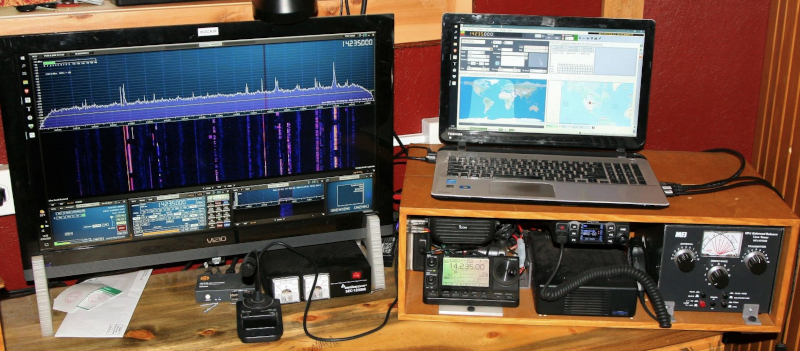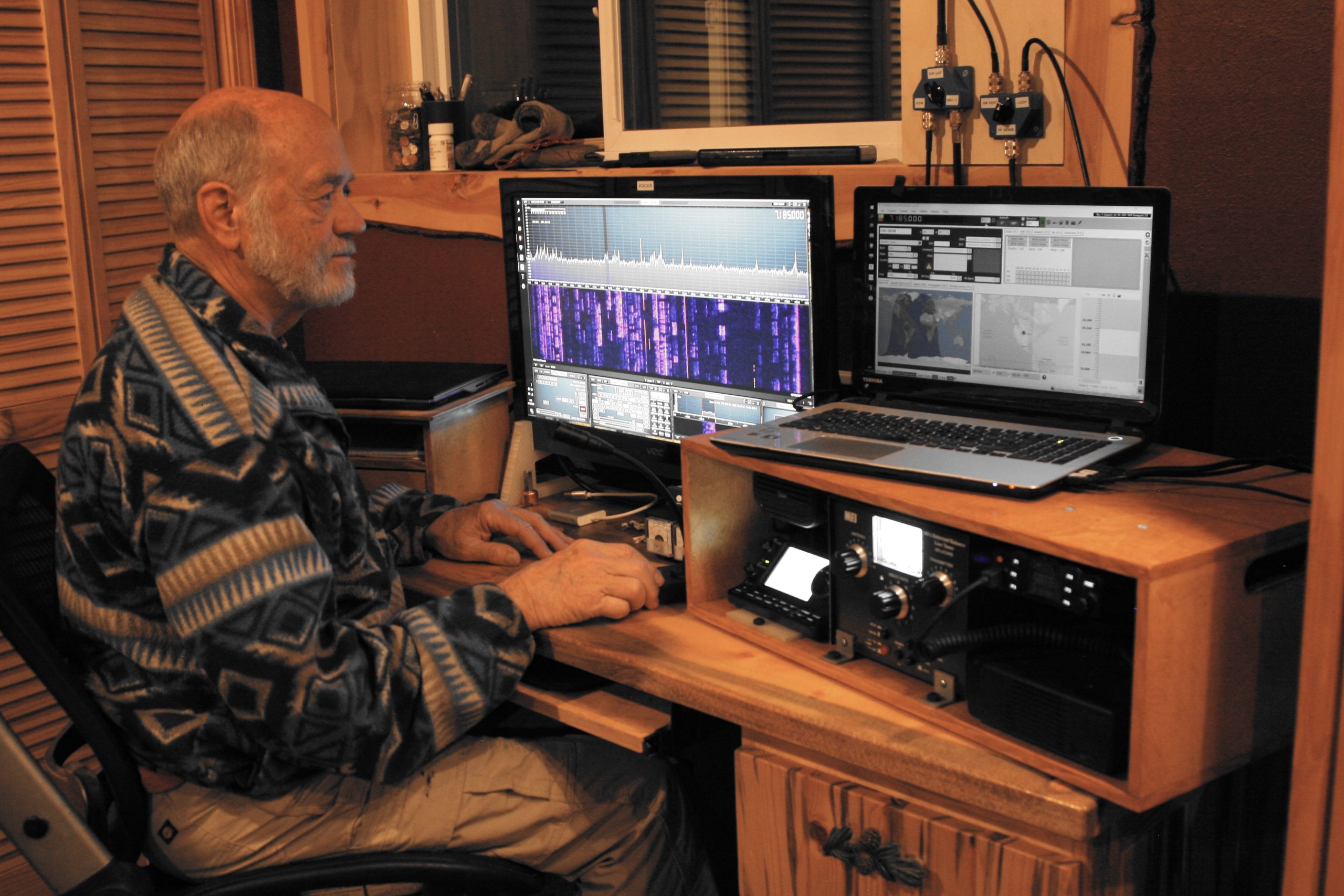HAM RADIO

We both became HAM RADIO OPERATORS in 2021 and both reached the Amateur Extra status the same year, the highest level for ham operators. We’ve been hamming on the radio, adding to our collection of ham radio equipment, adding to our collection of amateur radio operator friends, adding to our collection of amateur radio knowledge & licenses, and adding to our collection of websites. All this, along with all of our other projects including increasing our solar power, has kept us busy!
If you’re reading this and you’re not a Ham Radio Operator, you might consider giving it a whirl! You’ll need to take a test for an FCC license, but it’s a fun hobby and service to others.

TIM -- KØCKR (Click for more info)
Tim enjoys chatting (QSO's) with a lot of folks nearby on the local repeaters, exchanging info about ham radio: getting questions answered or offering help when needed. He really likes the challenge of creating and building homebrew antenna systems. He's made some great antennas for us to use both at home and elsewhere. He has been teaching other hams how to build their own antennas as well as hams wishing to upgrade their licenses.

LAURIE -- KØLTH (Click for more info)
Laurie has been having fun trying different frequencies & methods, responding to other hams calling “CQ” from all over the world. Most of these types of conversations (QSO’s) are quick hello’s and an exchange of name, location & a signal report, but Laurie prefers chatting a bit more than the quick hello. She finds that she’s able to get people talking more if she just starts asking questions, and many are quite talkative if given the chance. Hams are mostly men (OM’s), and even though there is an increasing number of female hams (YL’s), there aren’t many on the radio! Laurie finds that her female voice really gets the guys to answer her CQ calls!

WE BOTH have enjoyed combining our ham activities with camping. Tim has upgraded our camper with better batteries for ham radio, and has created a special antenna design that’s easy to put up quickly and has great performance. Laurie was able to get her first South Africa contact on a camping trip out in the boonies at around 10,000 feet. Hams are often amazed at what a great signal they’re getting from a portable setup.
WE BOTH plan to be ready to aid with emergency communications if our community should ever find itself without power or phones for an extended period of time. With our off-grid power and radios, we should be able to communicate beyond and within our local area when others cannot.
FOR AMATEUR RADIO OPERATORS
Tim’s portable antenna for use when camping (shown in the above photo) is what he calls the “Pyramid Doublet System” (PDS). With a good balanced-line tuner, we’re able to use this antenna for 6M-80M. For you hams out there, you can click on the link for more info about that. It’s designed for easy installation when portable, or can be used as a home HF antenna in a small backyard.
Our “shack” is designed in a box (see above) for easy removal to operate portable. We call it our “Shack in the Box”. We pick up the whole thing to take out in our camper or car, along with the PDS. It includes an SDR which provides a big panadapter display on the computer showing the waterfall you see in the photo above.




 Laurie (KØLTH) has been having fun trying different frequencies & methods, responding to other hams calling “CQ” from all over the world: US & Canada, South America, Central America & the Caribbean, Europe, Japan & even Indonesia. Most of these types of conversations (QSO’s) are quick hello’s and an exchange of name, location & a signal report. Most of the hams outside the U.S. are contesters, trying to get as many contacts as they can from as many different locations as they can. They are typically nice, but not chatty. Some are a bit more relaxed and like to talk, but they seem to be few and far between. From within the U.S. & Canada, there’s a mix of contesters and folks who like to chat (“rag chew”). It’s hit-&-miss when answering these CQ’s. I (Laurie) prefer chatting and talking a bit more than the quick hello, but finding out how far this wire antenna will send out the waves is a fun challenge as well.
Laurie (KØLTH) has been having fun trying different frequencies & methods, responding to other hams calling “CQ” from all over the world: US & Canada, South America, Central America & the Caribbean, Europe, Japan & even Indonesia. Most of these types of conversations (QSO’s) are quick hello’s and an exchange of name, location & a signal report. Most of the hams outside the U.S. are contesters, trying to get as many contacts as they can from as many different locations as they can. They are typically nice, but not chatty. Some are a bit more relaxed and like to talk, but they seem to be few and far between. From within the U.S. & Canada, there’s a mix of contesters and folks who like to chat (“rag chew”). It’s hit-&-miss when answering these CQ’s. I (Laurie) prefer chatting and talking a bit more than the quick hello, but finding out how far this wire antenna will send out the waves is a fun challenge as well.






